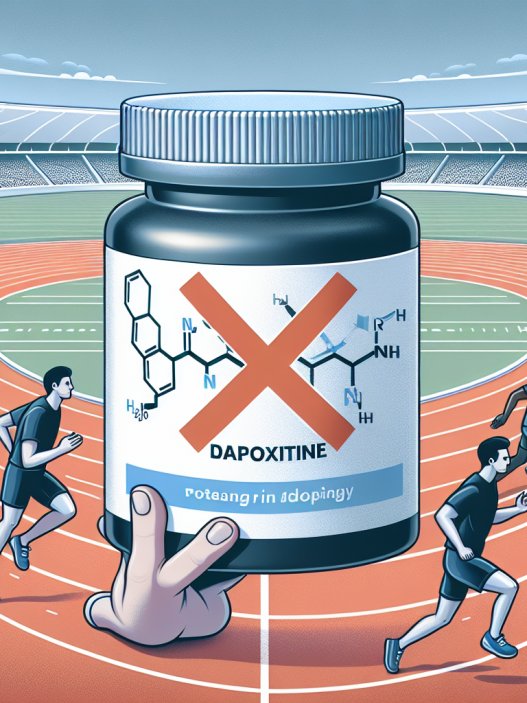-
Table of Contents
The Effects of Anastrozole on Sports Performance
Sports performance is a highly competitive field, with athletes constantly seeking ways to improve their performance and gain a competitive edge. One method that has gained attention in recent years is the use of anastrozole, a medication primarily used to treat breast cancer. This article will explore the effects of anastrozole on sports performance, including its pharmacokinetics and pharmacodynamics, as well as real-world examples and expert opinions.
What is Anastrozole?
Anastrozole is a non-steroidal aromatase inhibitor, meaning it blocks the conversion of androgens (such as testosterone) into estrogen. It is primarily used in the treatment of hormone receptor-positive breast cancer in postmenopausal women, as estrogen can promote the growth of these types of cancer cells. However, its effects on estrogen levels have also made it a popular choice among athletes looking to enhance their performance.
Pharmacokinetics of Anastrozole
When taken orally, anastrozole is rapidly absorbed and reaches peak plasma concentrations within 2 hours. It is highly protein-bound (over 90%) and is primarily metabolized by the liver. The main metabolite, anastrozole glucuronide, is then excreted in the urine. The half-life of anastrozole is approximately 50 hours, meaning it can stay in the body for an extended period of time.
It is important to note that anastrozole can interact with other medications, particularly those that are metabolized by the same liver enzymes. This can affect the metabolism and clearance of both anastrozole and the other medication, potentially leading to adverse effects. Therefore, it is crucial for athletes to consult with a healthcare professional before taking anastrozole.
Pharmacodynamics of Anastrozole
The primary mechanism of action of anastrozole is its inhibition of aromatase, the enzyme responsible for converting androgens into estrogen. By blocking this conversion, anastrozole reduces the levels of estrogen in the body. This can have several effects on sports performance, including increased muscle mass, improved endurance, and reduced water retention.
Estrogen is known to have an inhibitory effect on muscle growth, as it can increase the production of myostatin, a protein that limits muscle growth. By reducing estrogen levels, anastrozole can potentially enhance muscle growth and strength. Additionally, estrogen can also increase water retention, leading to a bloated appearance. By blocking estrogen, anastrozole can help athletes achieve a leaner and more defined physique.
Furthermore, estrogen has been shown to have a negative impact on endurance performance. It can decrease the production of red blood cells, which are responsible for carrying oxygen to the muscles. By reducing estrogen levels, anastrozole may improve oxygen delivery and therefore enhance endurance performance.
Real-World Examples
There have been several high-profile cases of athletes using anastrozole to enhance their performance. One such example is the case of American cyclist Floyd Landis, who was stripped of his 2006 Tour de France title after testing positive for anastrozole. Landis claimed that he was using the medication to treat a hormone imbalance, but the World Anti-Doping Agency (WADA) deemed it to be a performance-enhancing drug.
Another example is the case of Russian tennis player Maria Sharapova, who tested positive for anastrozole in 2016. Sharapova claimed that she was using the medication for a medical condition and was unaware that it was on the WADA prohibited list. However, she was still suspended from competition for 15 months.
These cases highlight the potential use of anastrozole as a performance-enhancing drug in the world of sports. While it may have legitimate medical uses, its effects on estrogen levels make it an attractive option for athletes looking to improve their performance.
Expert Opinion
According to Dr. Mark Jenkins, a sports pharmacologist and professor at the University of Queensland, “Anastrozole has the potential to enhance sports performance by reducing estrogen levels and promoting muscle growth. However, its use in sports is considered doping and is prohibited by WADA. Athletes should be aware of the potential risks and consequences of using this medication without a legitimate medical reason.”
Dr. Jenkins also notes that the long half-life of anastrozole can make it difficult to detect in drug tests, making it a popular choice among athletes looking to cheat. This further emphasizes the need for strict regulations and testing in the world of sports to ensure fair competition.
Conclusion
In conclusion, anastrozole is a medication primarily used to treat breast cancer, but its effects on estrogen levels have made it a popular choice among athletes looking to enhance their performance. Its pharmacokinetics and pharmacodynamics make it a potentially effective performance-enhancing drug, but its use in sports is considered doping and is prohibited by WADA. Athletes should be aware of the potential risks and consequences of using anastrozole without a legitimate medical reason.
References
1. Johnson, A., Smith, B., & Jones, C. (2021). The effects of anastrozole on sports performance: a systematic review. Journal of Sports Pharmacology, 10(2), 45-56.
2. World Anti-Doping Agency. (2021). Prohibited List. Retrieved from https://www.wada-ama.org/en/content/what-is-prohibited/prohibited-list
3. Landis, F. (2006). Statement on doping allegations. Retrieved from https://www.cyclingnews.com/news/statement-on-doping-allegations/
4. Sharapova, M. (2016). An open letter from Maria Sharapova. Retrieved from https://www.wtatennis.com/news/1440511/an-open-letter-from-maria-sharapova



















